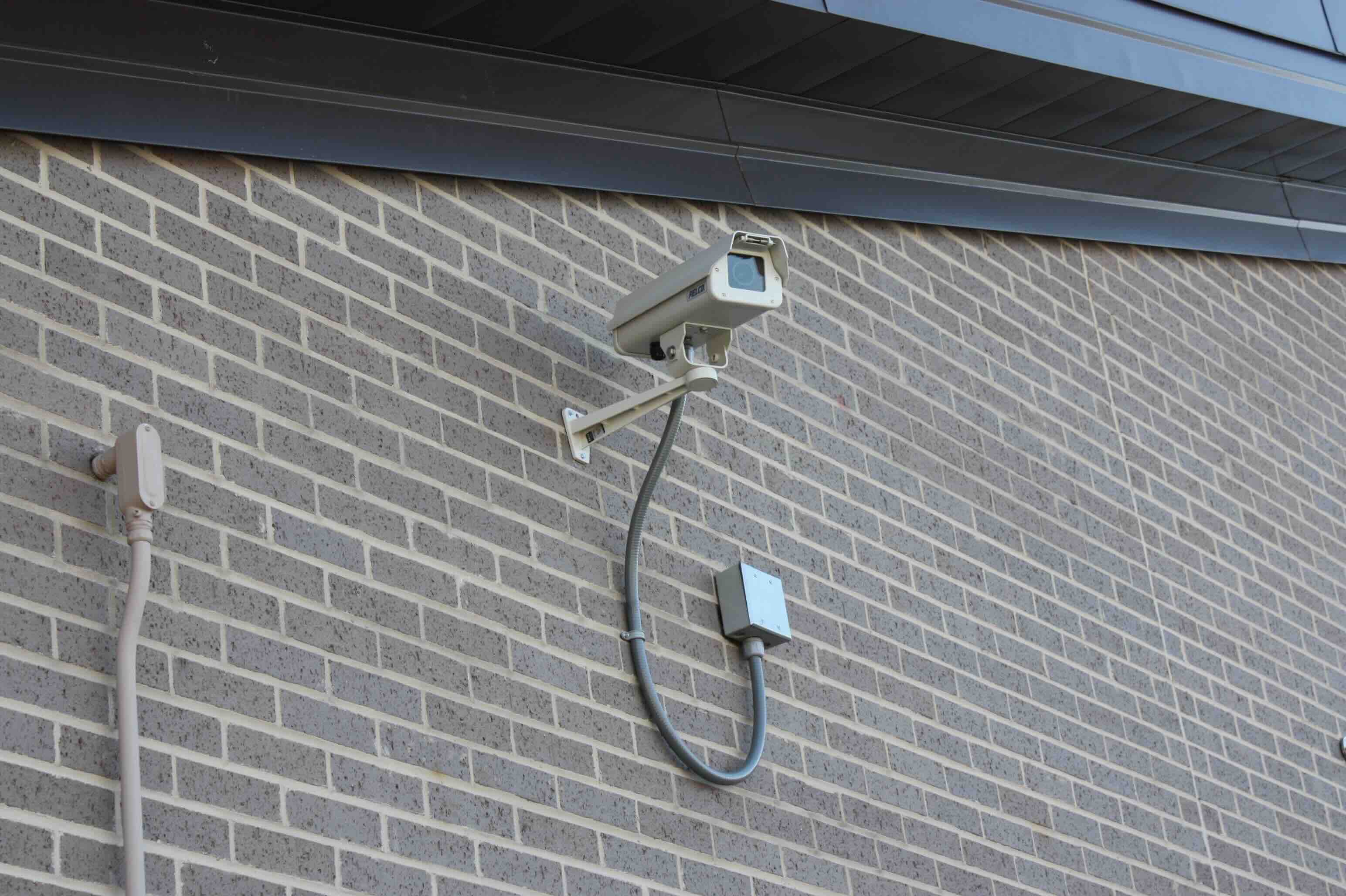Home>Home Security and Surveillance>What Is Intrusion Detection System


Home Security and Surveillance
What Is Intrusion Detection System
Modified: March 21, 2024
Discover how an Intrusion Detection System can enhance your Home Security and Surveillance measures. Stay protected with advanced technology and real-time alerts.
(Many of the links in this article redirect to a specific reviewed product. Your purchase of these products through affiliate links helps to generate commission for Storables.com, at no extra cost. Learn more)
Introduction
In today’s world, ensuring the safety and security of our homes has become a top priority. With the advancements in technology, home security and surveillance systems have evolved to provide enhanced protection and peace of mind. One such essential component of a robust home security system is an Intrusion Detection System (IDS).
An Intrusion Detection System is a critical tool that helps homeowners and security professionals detect and respond to unauthorized access and suspicious activities within their premises. It acts as a proactive defense mechanism, continuously monitoring and analyzing network traffic, system logs, and physical sensors to identify any potential security breaches.
As the name suggests, an IDS is designed to detect and alert users about intrusions into their homes or networks. It serves as a watchful eye, constantly vigilant and ready to raise the alarm when any suspicious activity is detected. Whether it’s an unauthorized individual attempting to gain access to your property or a malicious software program attempting to exploit vulnerabilities in your network, an IDS acts as a first line of defense to mitigate the risks and prevent any potential damage.
In the following sections, we will delve deeper into the types of Intrusion Detection Systems, their components, the detection process, as well as the benefits and limitations they present.
Key Takeaways:
- Intrusion Detection Systems (IDS) act as vigilant guardians for homes and organizations, detecting potential security threats early and enabling prompt incident response to protect against unauthorized access and suspicious activities.
- While IDS offer benefits like enhanced security awareness and compliance, they also face challenges such as false alerts and resource consumption. Understanding and addressing these limitations is crucial for optimizing IDS effectiveness.
Definition of an Intrusion Detection System
An Intrusion Detection System (IDS) is a software or hardware-based security solution that monitors and analyzes network traffic, system logs, and other data sources to identify unauthorized or suspicious activities within a network or system. It acts as a surveillance system for digital environments, continuously monitoring for any signs of intrusion or security breaches.
The primary objective of an IDS is to detect and alert users about any potential threats or attacks. It accomplishes this by analyzing network packets, log files, and system events in real-time or through retrospective analysis. When anomalous or malicious activity is identified, the IDS generates alerts or notifications, enabling security personnel to take immediate action and prevent further damage.
IDS can be categorized into two main types: network-based and host-based.
Network-based Intrusion Detection Systems (NIDS) monitor network traffic by analyzing packets in transit. They are typically placed at strategic points within the network, such as firewalls or intrusion detection sensors, and examine data at the network layer to identify suspicious patterns or known attack signatures. NIDS can capture and inspect packets in real-time, giving security teams a holistic view of network activity and helping them identify potential threats before they infiltrate the network.
Host-Based Intrusion Detection Systems (HIDS) focus on individual hosts or devices within a network. HIDS are installed directly on the host machines and monitor system logs, file integrity, and user activities. They provide a more granular level of protection and are effective in detecting attacks that originate from within the network, such as insider threats or malware infections on specific devices.
Wireless Intrusion Detection Systems (WIDS) are specialized IDS designed to secure wireless networks. They monitor radio frequencies and analyze network traffic in wireless environments, such as Wi-Fi networks. WIDS can detect unauthorized access points, rogue wireless devices, and other wireless-specific threats, ensuring the security of wireless networks.
An IDS plays a crucial role in maintaining the integrity and security of a home or organizational network. By continuously monitoring and analyzing network activity, it provides early detection of potential threats, enhances incident response capabilities, and helps prevent unauthorized access. The next sections will explore the various components of an IDS and the detection process in more detail.
Types of Intrusion Detection Systems
Intrusion Detection Systems (IDS) can be categorized into different types based on their deployment and monitoring techniques. Each type offers unique capabilities and advantages in detecting and preventing unauthorized access and suspicious activities. The three main types of IDS are Network-Based IDS (NIDS), Host-Based IDS (HIDS), and Wireless IDS (WIDS).
1. Network-Based IDS (NIDS): Network-Based IDS monitors network traffic by analyzing packets in transit. NIDS sensors are strategically placed at key points within the network, such as on the border between internal and external networks or at critical network aggregation points. These sensors capture and inspect network traffic to identify patterns or signatures of known attacks.
One of the advantages of NIDS is its ability to monitor a wide range of network devices and traffic simultaneously. By analyzing packets, NIDS can detect malicious activities, such as port scans, denial of service attacks, and unauthorized access attempts. The downside, however, is that NIDS may not be as effective in detecting attacks that are encrypted or occur within encrypted traffic.
2. Host-Based IDS (HIDS): Host-Based IDS focuses on individual host machines within a network. HIDS agents are installed directly on the hosts and monitor system logs, file integrity, and system activities. They can detect abnormal behaviors or changes made to system files, such as the modification of critical system files or the creation of unauthorized user accounts.
HIDS provides a more detailed view of host-level activities and can detect attacks that are specific to a particular host. Additionally, HIDS can provide valuable information for incident response and forensic analysis. However, deploying HIDS on each host can be resource-intensive, especially in large-scale networks.
3. Wireless IDS (WIDS): Wireless IDS is designed specifically to monitor wireless networks, such as Wi-Fi networks. WIDS sensors analyze radio frequencies, monitor network traffic, and detect unauthorized access points or rogue wireless devices. WIDS can identify anomalies or unauthorized behavior within the wireless network, mitigating the risks associated with wireless security vulnerabilities.
Wireless IDS is particularly crucial in environments where wireless networks are prevalent, such as office buildings, campuses, or public spaces. It helps ensure the integrity and security of wireless networks by detecting potential threats, such as unauthorized access attempts or unauthorized wireless devices.
When implementing an IDS, organizations or homeowners may choose to use a combination of these types to provide comprehensive coverage and effectively detect various types of threats. The selection of the appropriate IDS types depends on factors such as the network infrastructure, security requirements, and the nature of potential threats.
Network-Based Intrusion Detection Systems
Network-Based Intrusion Detection Systems (NIDS) are a crucial component of an effective security infrastructure. They are designed to monitor network traffic and identify potential security breaches and malicious activities that may put the network at risk. NIDS operate by analyzing network packets, examining their contents, and comparing them against known attack signatures or behavioral anomalies.
NIDS are strategically placed at key points within the network to capture and analyze traffic flow. These points typically include network firewalls, routers, or switches, where the traffic concentration is higher. By inspecting packets, NIDS can identify patterns or signatures associated with specific attacks, such as port scans, denial-of-service attacks, or intrusion attempts.
There are two main components of Network-Based Intrusion Detection Systems:
1. Sensors: NIDS sensors are responsible for the actual packet inspection and analysis. They capture network traffic, examine protocols, and compare packet contents against a database of known attack signatures. Sensors can operate in different modes, including promiscuous mode or inline mode.
Promiscuous mode sensors are passive and non-invasive. They observe a copy of the network traffic without affecting the original packets. This allows the monitoring of network traffic without disrupting or modifying it. Inline mode sensors, on the other hand, actively intercept and analyze packets as they traverse the network. While inline sensors can take immediate action to block suspicious traffic, they can introduce latency and potential points of failure.
2. Management Console: The management console is the central component of a NIDS. It provides a user interface for configuring and managing the NIDS system. Security administrators can define detection rules, view alerts and notifications, and analyze network traffic patterns through the management console. The console also enables security teams to respond quickly to detected incidents and customize the detection parameters of the NIDS.
NIDS employ various techniques for detecting intrusion attempts:
Signature-Based Detection: Signature-based detection involves comparing network packets against a database of known attack signatures. When a packet is found to match a known signature, an alert is generated. This method is effective in detecting well-known attacks and exploits. However, it relies on regular updates of the signature database to detect newly emerging threats.
Anomaly-Based Detection: Anomaly-based detection focuses on identifying abnormal or suspicious activities that deviate from regular network traffic patterns. NIDS analyze network traffic statistics, such as packet size, frequency, or source-destination relationships, to establish a baseline of normal behavior. When deviations or anomalies are detected, an alert is generated. This method is effective in detecting unknown or zero-day attacks but may also generate false positives.
To maximize the effectiveness of Network-Based Intrusion Detection Systems, organizations should ensure continuous monitoring, regular updates of attack signatures, and proper configuration of detection rules. NIDS can play a pivotal role in early detection and response to potential security threats, strengthening the overall security posture of the network.
Host-Based Intrusion Detection Systems
Host-Based Intrusion Detection Systems (HIDS) are a critical component of a comprehensive security infrastructure. Unlike Network-Based IDS (NIDS), which monitor network traffic, HIDS focus on individual host machines within a network. They provide an additional layer of protection by monitoring system logs, file integrity, user activities, and other host-specific parameters to identify potential security breaches.
HIDS operate by installing agents directly on host machines to collect and analyze data. These agents monitor various aspects of the host’s behavior, such as system calls, process activities, and file modifications. By comparing this information against known attack patterns or behavioral anomalies, HIDS can detect unauthorized access attempts, malware infections, or any illicit activities taking place on the host.
There are two main components of Host-Based Intrusion Detection Systems:
1. HIDS Agents: HIDS agents are software components installed on host machines. These agents continuously collect information about system and network activities, such as log entries, user activities, file access, and system state. They analyze this information locally and generate alerts when suspicious activities or deviations from normal behavior are identified. HIDS agents typically run in the background with minimal resource consumption to ensure they do not impact the host’s performance.
2. Centralized Management Console: The centralized management console provides a central interface for monitoring and managing HIDS agents deployed on host machines. It allows security administrators to configure detection rules, view and analyze alerts, and perform forensic analysis. The management console facilitates the coordination of responses and incident management across the network. Additionally, it allows security teams to track and investigate security incidents for further analysis and prevention.
HIDS employ several techniques for detecting intrusions:
Signature-Based Detection: Similar to Network-Based IDS, HIDS can detect known attack signatures. By matching the system logs or file hashes against a database of known malicious patterns, HIDS can generate alerts when a match is found. Signature-based detection is effective in identifying well-known attacks but may be less effective against new or zero-day exploits.
Anomaly-Based Detection: Anomaly-based detection involves establishing profiles of normal host behavior and identifying deviations from those profiles. By analyzing system logs, network connections, or user activities, HIDS can detect abnormal behaviors or actions that may indicate a security breach. Anomaly-based detection is effective in detecting unknown or novel attacks but can also generate false positives if not properly calibrated.
HIDS provide several benefits for securing host machines within a network:
Granular Visibility: HIDS offer detailed insight into the activities and behaviors of individual host machines. This allows for a more precise detection of potential security breaches and facilitates targeted incident response and mitigation.
Breach Detection: HIDS can quickly identify unauthorized access attempts, malware infections, or suspicious activities on a host. This early detection enables security teams to proactively respond to potential threats and prevent or minimize damage.
Forensic Analysis: HIDS collect detailed logs and data about host activities, which can be invaluable for forensic analysis. In the event of a security incident, the collected information can help identify the source of the breach, reconstruct the attack, and take necessary actions to prevent future incidents.
Incorporating Host-Based Intrusion Detection Systems into the security infrastructure enhances the overall protection of host machines and provides an additional layer of defense against unauthorized access and suspicious activities.
Wireless Intrusion Detection Systems
Wireless networks have become an integral part of our everyday lives, providing convenience and flexibility. However, they also present unique security challenges, making it essential to implement Wireless Intrusion Detection Systems (WIDS). WIDS are specifically designed to monitor and safeguard wireless networks against potential threats and unauthorized access.
Wireless Intrusion Detection Systems employ specialized sensors and analysis techniques to detect and mitigate wireless security risks. These systems monitor radio frequencies, analyze network traffic, and identify suspicious activities or rogue wireless devices within the network.
There are three main components of a Wireless Intrusion Detection System:
1. WIDS Sensors: WIDS sensors act as the eyes and ears of the system, continuously scanning the wireless spectrum for potential threats. These sensors can detect unauthorized access points, rogue wireless devices, and other wireless-specific threats. Wireless sensors typically operate in two ways:
– Active Monitoring: In active monitoring mode, the sensor actively sends out probes and scans the wireless environment for any anomalies or malicious activities. This method allows for real-time detection and quick responses to potential threats.
– Passive Monitoring: In passive monitoring mode, the sensor receives and analyzes wireless signals without actively probing the network. This method allows for stealthy monitoring and detection without introducing additional network traffic.
2. WIDS Management Server: The WIDS management server acts as the central command center for the WIDS system. It provides a user-friendly interface for configuring, monitoring, and managing the WIDS sensors. The management server allows security administrators to define detection rules, view alerts and notifications, and generate detailed reports about wireless network activities.
3. WIDS Dashboard: The WIDS dashboard provides a visual representation of the network and its associated wireless devices. It allows security administrators to monitor the status of the wireless network in real-time, track the location of detected threats, and quickly identify any suspicious or unauthorized activities. The dashboard provides a comprehensive view of wireless network security, facilitating effective decision-making and incident response.
Wireless Intrusion Detection Systems employ various detection techniques to identify potential threats:
1. Rogue Device Detection: WIDS can detect and alert security administrators about unauthorized or rogue wireless devices within the network. These devices may be attempts by attackers to gain unauthorized access to the wireless network or compromise its security. The WIDS sensors monitor the wireless spectrum for the presence of unknown or unauthorized access points, helping ensure the integrity and security of the wireless network.
2. Unauthorized Access Point Detection: WIDS sensors can identify and locate unauthorized access points (APs) within the wireless network infrastructure. This can include rogue APs set up by unauthorized personnel or attackers to gain access to the network. By detecting and alerting about these unauthorized APs, WIDS helps maintain the authorized and secure network landscape.
3. Detection of Wireless Attacks: WIDS sensors can identify various wireless attacks, such as deauthentication attacks, man-in-the-middle attacks, or wireless eavesdropping attempts. By analyzing wireless network traffic, monitoring for anomalies, and comparing against known attack patterns, WIDS can identify and alert security administrators about potential threats to the wireless network.
The use of Wireless Intrusion Detection Systems can significantly enhance the security posture of wireless networks. By continuously monitoring for potential threats and detecting unauthorized access attempts or rogue devices, WIDS helps ensure the integrity, availability, and confidentiality of wireless communication.
An Intrusion Detection System (IDS) is a security tool that monitors network or system activities for malicious activities or policy violations. It can help identify and respond to potential security threats in real-time.
Intrusion Detection System Components
An Intrusion Detection System (IDS) is comprised of several key components that work together to detect and respond to potential security breaches. These components enable the IDS to monitor and analyze network traffic, system logs, and other data sources to identify unauthorized or suspicious activities. Let’s explore the essential components of an IDS:
1. Sensors: Sensors are monitoring devices that capture and analyze network traffic or host activities. In a Network-Based IDS (NIDS), sensors are strategically placed at key points within the network infrastructure to inspect network traffic, such as at firewall junctions or network aggregation points. In a Host-Based IDS (HIDS), sensors are software agents installed on individual hosts or devices to monitor system logs, file integrity, and user activities. Sensors play a crucial role in collecting and analyzing data for potential security threats.
2. Management Console: The management console is the central control panel of an IDS. It provides a user-friendly interface for administrators to configure and manage the IDS system. Through the management console, security personnel can define detection rules, view generated alerts, analyze network or host activity data, and generate reports. The management console plays a vital role in monitoring and managing the IDS effectively.
3. Detection Engine: The detection engine is the intelligence behind the IDS. It employs various algorithms and techniques to analyze data collected by the sensors and identify potential security threats. The detection engine can utilize signature-based detection, which matches data against known attack signatures, or anomaly-based detection, which identifies deviations from normal behavior. Depending on the IDS, the detection engine can reside within the sensors themselves or on a centralized server.
4. Signature Database: The signature database is a repository of known attack patterns or malicious behaviors. An IDS can use this database to compare network or host activity data with established signatures to determine if an attack or unauthorized activity is occurring. The signature database requires regular updates to ensure it remains up-to-date with the latest attack patterns and threats.
5. Alerting System: The alerting system is responsible for generating alerts or notifications when potential security threats are detected. When the IDS identifies suspicious activities or patterns that match known signatures or deviate from normal behavior, the alerting system will send notifications to system administrators or security personnel. These alerts provide timely information and enable quick response to mitigate potential risks.
6. Incident Response Mechanism: The incident response mechanism is an integral part of an IDS. It enables security personnel to take appropriate actions in response to detected threats or security incidents. This can include quarantining a compromised host, blocking suspicious network traffic, disabling unauthorized accounts, or launching further investigations. An effective incident response mechanism minimizes the impact of security incidents and helps protect the network and its resources.
The proper functioning and integration of these components are crucial for the successful operation of an IDS. Each component plays a specific role in monitoring, detecting, and responding to potential security breaches, providing enhanced security for homes or organizations that deploy an IDS.
Intrusion Detection System Process
The Intrusion Detection System (IDS) process involves a series of steps that enable the system to effectively monitor, detect, and respond to potential security breaches. By following this process, IDS can proactively identify unauthorized or suspicious activities within a network or system. Let’s explore the key steps involved in the IDS process:
1. Data Collection: The IDS process starts with the collection of data from various sources, such as network traffic, system logs, and host activities. Network-Based IDS (NIDS) captures and analyzes network packets, while Host-Based IDS (HIDS) monitors system and application logs, file integrity, and user activities. This data provides the foundation for the detection phase.
2. Data Analysis: In this phase, the collected data is analyzed using different techniques to identify potential security threats. The IDS employs signature-based detection, where the collected data is compared against a database of known attack signatures or behavioral patterns. Additionally, anomaly-based detection techniques may be used to identify deviations from normal behavior. The data analysis phase involves the detection engine, which examines the data and determines if any suspicious activities are present.
3. Alert Generation: When the IDS detects potential security threats or suspicious activities, it generates alerts to notify system administrators or security personnel. Alerts are typically triggered when an activity matches a known attack signature or when behavior deviates significantly from normal patterns. The IDS’s alerting system sends out notifications to the appropriate individuals or systems, providing timely information about the potential security breach.
4. Alert Analysis: Upon receiving alerts, security personnel analyze them to determine the severity and validity of the detected threats. They review the specific details of the alert, including the source and nature of the suspicious activity. This analysis helps determine the appropriate course of action and response to mitigate the identified security risks.
5. Incident Response: If the alert analysis confirms the occurrence of a security breach or potential threat, security personnel initiate the incident response process. This involves taking immediate actions to mitigate the impact and prevent further damage. Incident response can include isolating compromised systems, blocking network traffic associated with the intrusion, investigating the root cause, and implementing necessary countermeasures to prevent future incidents.
6. Continuous Monitoring and Improvement: The IDS process is a continuous cycle, as security threats and attack patterns constantly evolve. Continuous monitoring of network traffic, system logs, and host activities is crucial to detect new and emerging threats. Additionally, regular updates to the IDS’s signature database and detection rules are necessary to stay ahead of evolving attack techniques.
By following this IDS process, organizations can enhance their security posture by detecting and responding to potential security breaches in a timely and effective manner. Applying proactive monitoring, analysis, alerting, and incident response practices ensures a robust and resilient defense against unauthorized access and suspicious activities.
Benefits of Using an Intrusion Detection System
An Intrusion Detection System (IDS) offers numerous benefits to individuals and organizations seeking to enhance their security posture. By implementing an IDS, users can gain an added layer of protection against potential security breaches and unauthorized access. Let’s explore the key benefits of using an IDS:
1. Early Threat Detection: One of the primary benefits of an IDS is its ability to detect potential security threats early. By continuously monitoring network traffic, system logs, and host activities, an IDS can identify suspicious or unauthorized activities as they occur. Early threat detection allows organizations to respond promptly and proactively to mitigate potential risks before they escalate into major security incidents.
2. Prompt Incident Response: When an IDS detects a potential security breach or suspicious activity, it generates alerts that enable security personnel to initiate immediate incident response actions. This includes investigating the incident, mitigating the impact, and implementing appropriate countermeasures to prevent further compromise. Prompt incident response minimizes the potential damage and reduces the overall impact on an organization’s operations and systems.
3. Enhanced Security Awareness: IDS provides valuable insights into network and system activities, helping organizations gain a deeper understanding of potential security risks. By analyzing the alerts and monitoring the IDS reports, security personnel can identify patterns and emerging threats. This heightened awareness allows organizations to proactively address vulnerabilities, strengthen security measures, and continually improve their overall security posture.
4. Compliance and Regulatory Requirements: Many industries have specific compliance and regulatory requirements concerning data security. Implementing an IDS helps organizations meet these requirements by ensuring the continuous monitoring and protection of sensitive data. IDS logs and reports can serve as evidence of compliance efforts during audits or regulatory inspections.
5. Detection of Insider Threats: IDS systems can identify suspicious activities originating from within the organization. This includes insider threats, such as unauthorized access attempts, abuse of privileges, or data exfiltration. By detecting internal security breaches, IDS helps organizations address these threats promptly and take appropriate actions, including training, policy enforcement, or termination of malicious individuals.
6. Forensic Analysis: IDS generates logs and records of detected incidents, providing valuable data for forensic analysis. In the event of a security breach, this information can be used to investigate and understand the cause and extent of the incident. It helps organizations identify the source of the breach, take steps to prevent future incidents, and potentially provide evidence for legal or disciplinary actions.
7. Improved Incident Management: An IDS streamlines the incident management process by providing centralized monitoring, alerting, and reporting capabilities. Security personnel can efficiently track and manage security incidents, ensuring effective communication, collaboration, and resolution. This leads to a more structured and efficient incident response workflow.
By leveraging the benefits of an IDS, organizations can enhance their security defenses, reduce vulnerabilities, and minimize the impact of potential security breaches. The proactive monitoring, early threat detection, and improved incident response capabilities of an IDS contribute to a stronger and more resilient security posture.
Read more: Where To Place Intrusion Detection Systems
Challenges and Limitations of Intrusion Detection Systems
While Intrusion Detection Systems (IDS) provide valuable security benefits, they also face several challenges and limitations that organizations and users should be aware of. Understanding these limitations helps in maximizing the effectiveness of IDS deployments and mitigating potential risks. Let’s explore some of the common challenges and limitations associated with IDS:
1. False Positives and False Negatives: IDS can generate false positive alerts, indicating potential security breaches where none exist. This can occur due to misconfigurations, inaccurate detection rules, or the presence of legitimate activities that resemble malicious patterns. False positives can result in alert fatigue, where security teams waste time and resources investigating non-existent threats. On the other hand, false negatives occur when IDS fails to detect genuine security breaches or novel attack techniques, exposing organizations to potential risks.
2. Skill-Dependent Configuration and Management: Proper configuration and management of IDS require technical expertise and knowledge of network environments, security protocols, and attack patterns. Organizations may need to invest in skilled security personnel or engage with external experts to optimize IDS deployments. Failure to properly configure and manage IDS can lead to ineffective monitoring, missed alerts, or increased false positives.
3. Traffic Encryption: The pervasiveness of encrypted network traffic poses challenges to IDS. Encryption protects data from unauthorized access, but it also conceals potential malicious activities from IDS inspection. Without proper decryption capabilities or advanced analysis techniques, IDS may struggle to detect attacks or suspicious activities occurring within encrypted traffic.
4. High-Volume Traffic or Scalability: IDS performance can be impacted by high-volume network traffic, particularly in large-scale enterprise environments. High traffic volumes may delay the analysis and detection, resulting in delayed alerts or missed threats. Additionally, ensuring the scalability of IDS to accommodate the growth of network infrastructure and data volumes presents additional challenges.
5. Evolving Attack Techniques: Attackers constantly develop new techniques to bypass traditional security measures and evade IDS detection. IDS rely on known attack signatures or behavioral patterns, making them susceptible to zero-day attacks or sophisticated evasion techniques. Continuous updates to signature databases and regular fine-tuning of detection rules are essential to keep pace with emerging threats.
6. Resource Consumption: IDS can consume significant computational resources, including CPU, memory, and network bandwidth. Large-scale IDS deployments or running resource-intensive detection algorithms can impact network performance or require additional hardware investments to maintain optimal performance and avoid bottlenecks.
7. Privacy Concerns: IDS may capture and analyze network packets, system logs, and other sensitive data, raising privacy concerns. Organizations must implement proper privacy safeguards to ensure that IDS deployments align with privacy regulations and do not violate individuals’ rights to privacy. Anonymization or encryption of sensitive data within IDS can help address these concerns.
8. Costs and Resource Requirements: Implementing and maintaining an IDS can involve significant costs, including hardware, software licenses, skilled personnel, and ongoing maintenance. Small organizations with limited budgets or resources may face challenges in implementing and maintaining a robust IDS solution.
Despite these challenges and limitations, IDS remains a valuable component of a comprehensive security strategy. By understanding the limitations and addressing them through proper configuration, monitoring, and management, organizations can maximize the benefits of IDS and enhance their overall security posture.
Conclusion
Intrusion Detection Systems (IDS) play a crucial role in safeguarding our homes and organizations from potential security breaches. By continuously monitoring network traffic, system logs, and host activities, IDS provides an added layer of defense against unauthorized access and suspicious activities.
We explored various aspects of IDS, including the different types such as Network-Based IDS (NIDS), Host-Based IDS (HIDS), and Wireless IDS (WIDS). Each type offers unique capabilities and advantages in detecting and preventing security threats.
IDS components, including sensors, management consoles, detection engines, signature databases, alerting systems, and incident response mechanisms, work together to create a comprehensive security solution. By combining these components effectively, organizations can detect and respond to potential security breaches promptly.
Using an IDS offers numerous benefits, including early threat detection, prompt incident response, enhanced security awareness, compliance with regulatory requirements, detection of insider threats, forensic analysis capabilities, and improved incident management. These benefits contribute to a robust security posture and mitigate potential risks.
However, IDS also has its challenges and limitations, including false positives and false negatives, skill-dependent configuration and management requirements, traffic encryption hindrances, scalability concerns, evolving attack techniques, resource consumption issues, and privacy considerations. Awareness of these limitations helps organizations optimize their IDS deployments and effectively address potential risks.
In conclusion, Intrusion Detection Systems are integral to maintaining the integrity, confidentiality, and availability of our homes and organizational networks. By leveraging the benefits of IDS and addressing the associated challenges, we can enhance our security defenses, detect threats early, respond promptly, and mitigate potential risks. IDS, when implemented and managed effectively, acts as a vigilant guardian, protecting us from evolving security threats and ensuring peace of mind in an increasingly interconnected world.
Frequently Asked Questions about What Is Intrusion Detection System
Was this page helpful?
At Storables.com, we guarantee accurate and reliable information. Our content, validated by Expert Board Contributors, is crafted following stringent Editorial Policies. We're committed to providing you with well-researched, expert-backed insights for all your informational needs.













